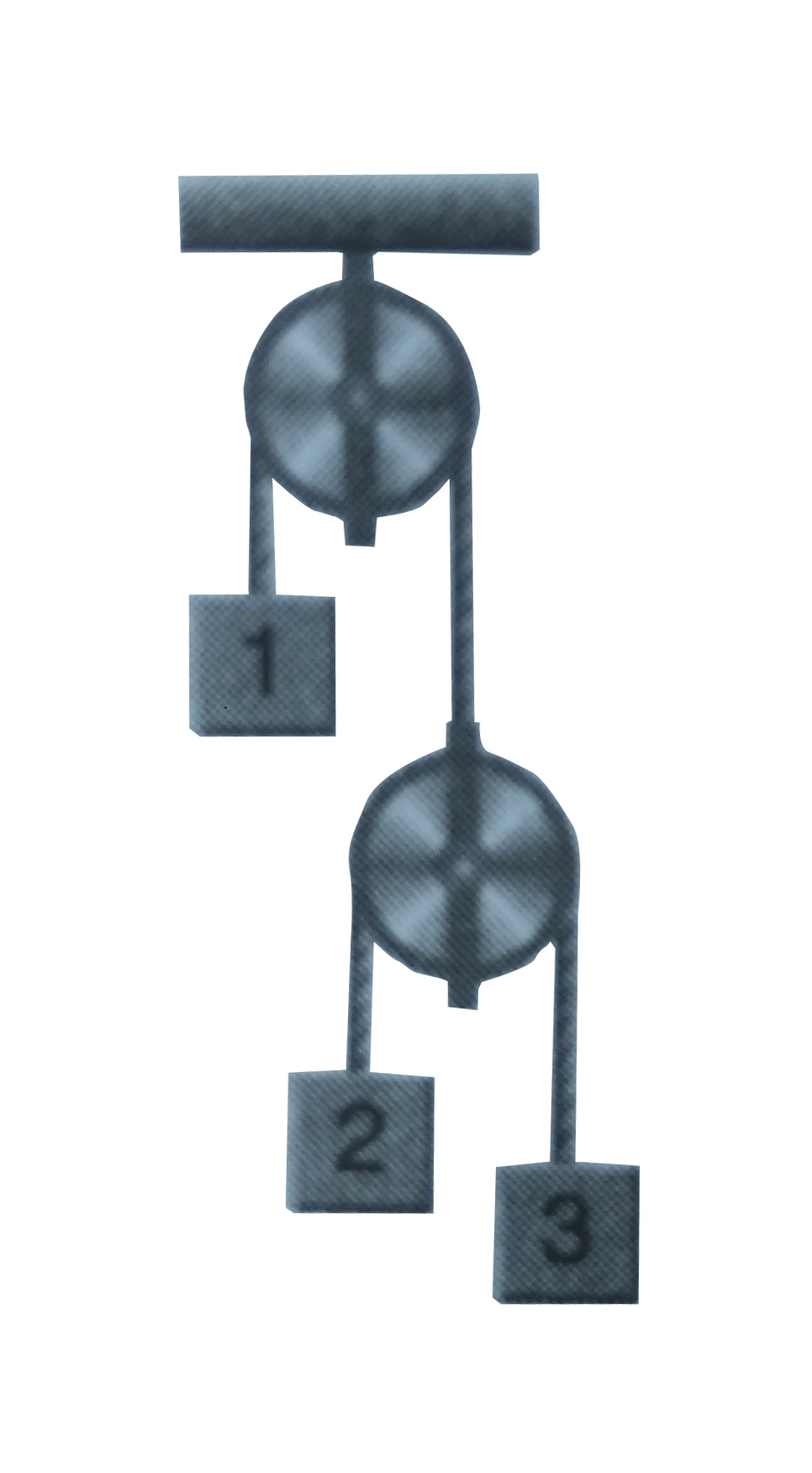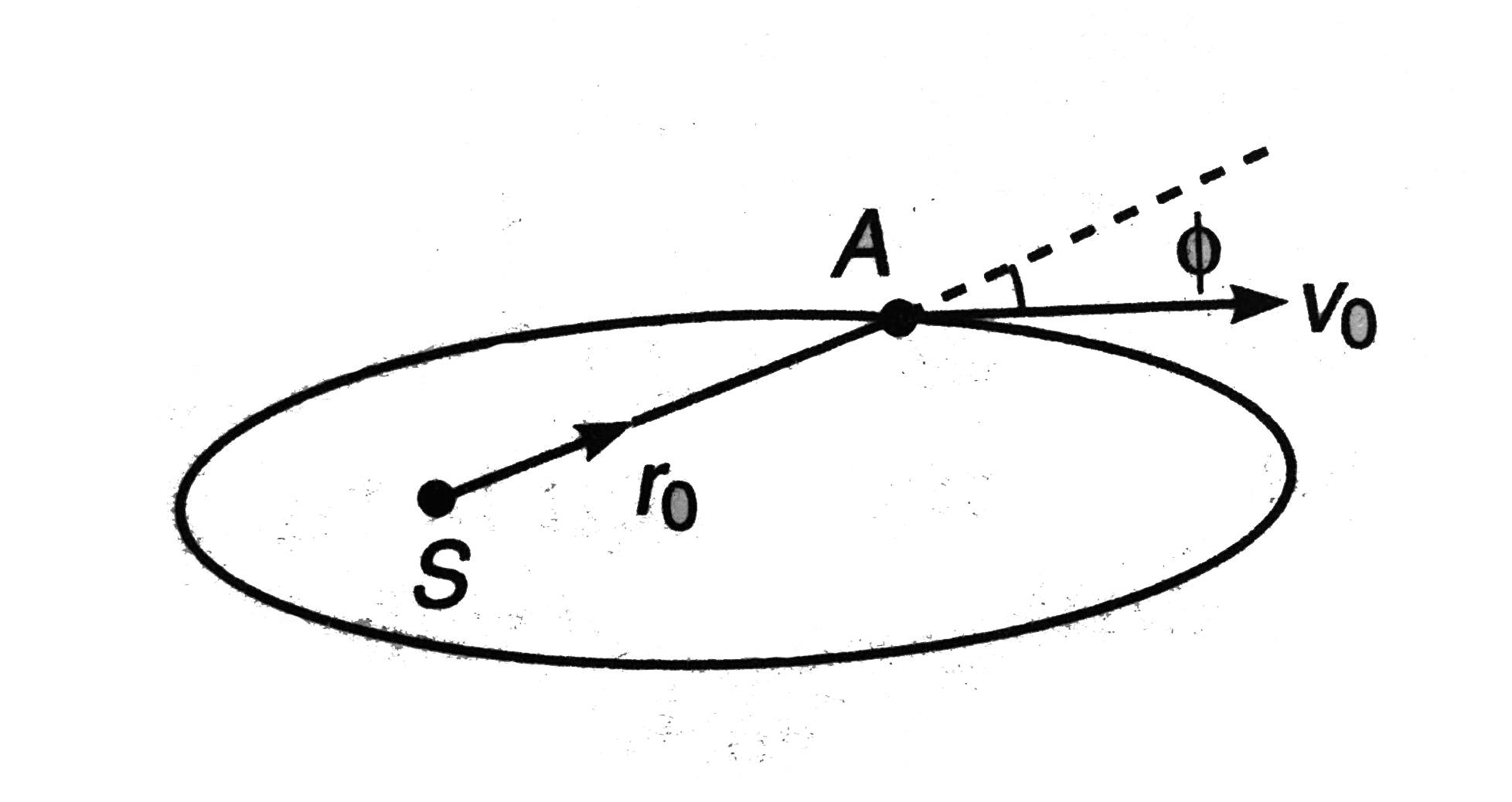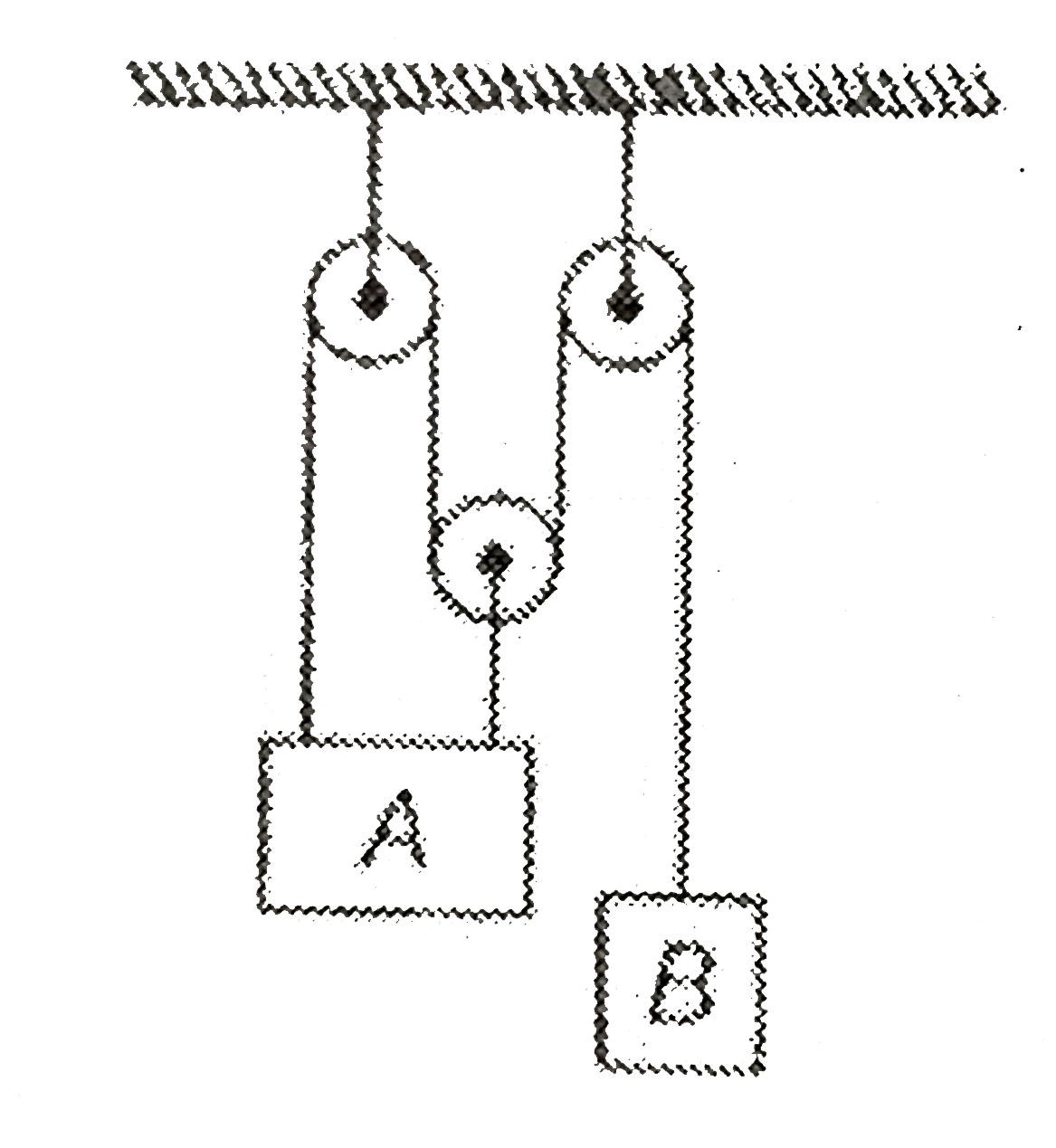At a certain time velocities of 1 and 2 both are 1m/s upwards. Find the velocity of 3 at that moment

x1+x4=l1 (length of first string)
x2−x4+x3−x4=l2 ( length of second string)
⇒v1+v4=0&v2+v3−2v4=0
⇒v2+v3+2v1=0
Taking upward direction as positive v1=v2=1
so 1+v3+2xl=0⇒v3=−3ms−1
i.e. velocity of block 3 is 3ms−1 downwards.

Topper's Solved these Questions
- BOOK - ALLENCHAPTER - NEWTONS LAWS OF MOTIONEXERCISE - SWOE44videos
NEWTONS LAWS OF MOTION
- BOOK - ALLENCHAPTER - NEWTONS LAWS OF MOTIONEXERCISE - EXERCISE-I52videos
NEWTONS LAWS OF MOTION
- BOOK - ALLENCHAPTER - NEWTON'S LAWS OF MOTION & FRICTIONEXERCISE - EXERCISE (JA)4videos
NEWTON'S LAWS OF MOTION & FRICTION
- BOOK - ALLENCHAPTER - RACEEXERCISE - Basic Maths (Wave Motion & Dopplers Effect) (Stationary waves & doppler effect, beats)24videos
RACE
Similar Questions
Knowledge Check
- Question 1 - Select One
For a certain metal v is the five times of v0 and the maximum velocity of coming out photons is 8×106m/s. If v=2v0, then maximum velocity of photoelectrons will be
A4×106m s−1B6×106m s−1C8×106m s−1D1×106m s−1
Two particles are projected from a tower horizontally in opposite directions with velocities 10m/sand20m/s. Find the time when their velocity vectors are mutually perpendicular. Take g=10m/s2.
View SolutionFind the maximum and minimum distances of the planet A from the sun S, if at a certain moment of times it was at a distance r0 and travelling with the velocity υ0. With the angle between the radius vector and velocity vector being equal to ϕ.
 View Solution
View SolutionA body covers first 13 part of its journey with a velocity of 2m/s, next 13 part with a velocity of 3ms and rest of the journey with a velocity 6m/s. The average velocity of the body will be
View SolutionA rigid body is spinning about a fixed point (3,-2,-1) with an angular velocity of 4 rad/s, the axis of rotation being in the direction of (1,2,-2). Find the velocity of the particle at point (4,1,1).
View SolutionA body of mass m1 moving with a velocity 3m/s collides with another body at rest of m2 . After collision the velocities of the two bodies are 2m/s and 5m/s , respectively , along the direction of motion of m1. The ratio m1/m2 is
View SolutionFor the pulley system shown in fig. each of the cables at A and B is given a velocity of 2ms−1 in the direction of the arrow. Determine the upward velocity v of the load m.
 View Solution
View SolutionA particle is moving along x-axis such that its velocity varies with time according to v=(3m/s2)t−(2m/s3)t2. Find the velocity at t = 1 s and average velocity of the particle for the interval t = 0 to t = 5 s.
View Solution


